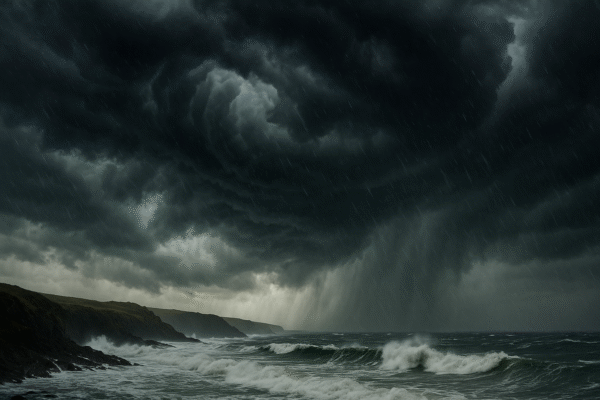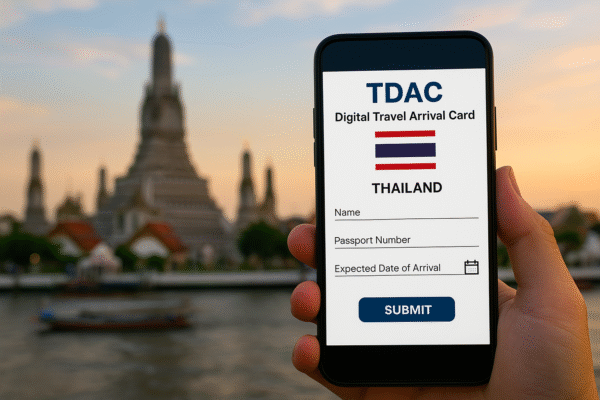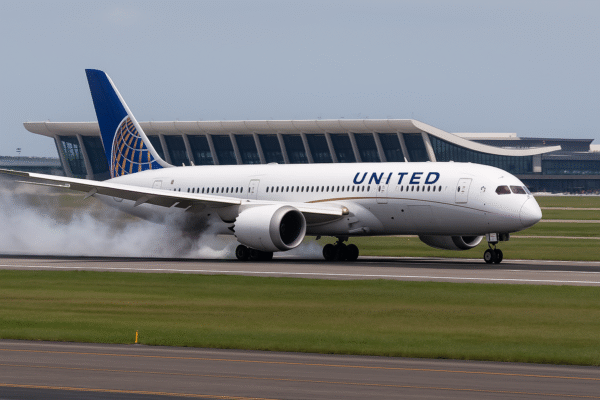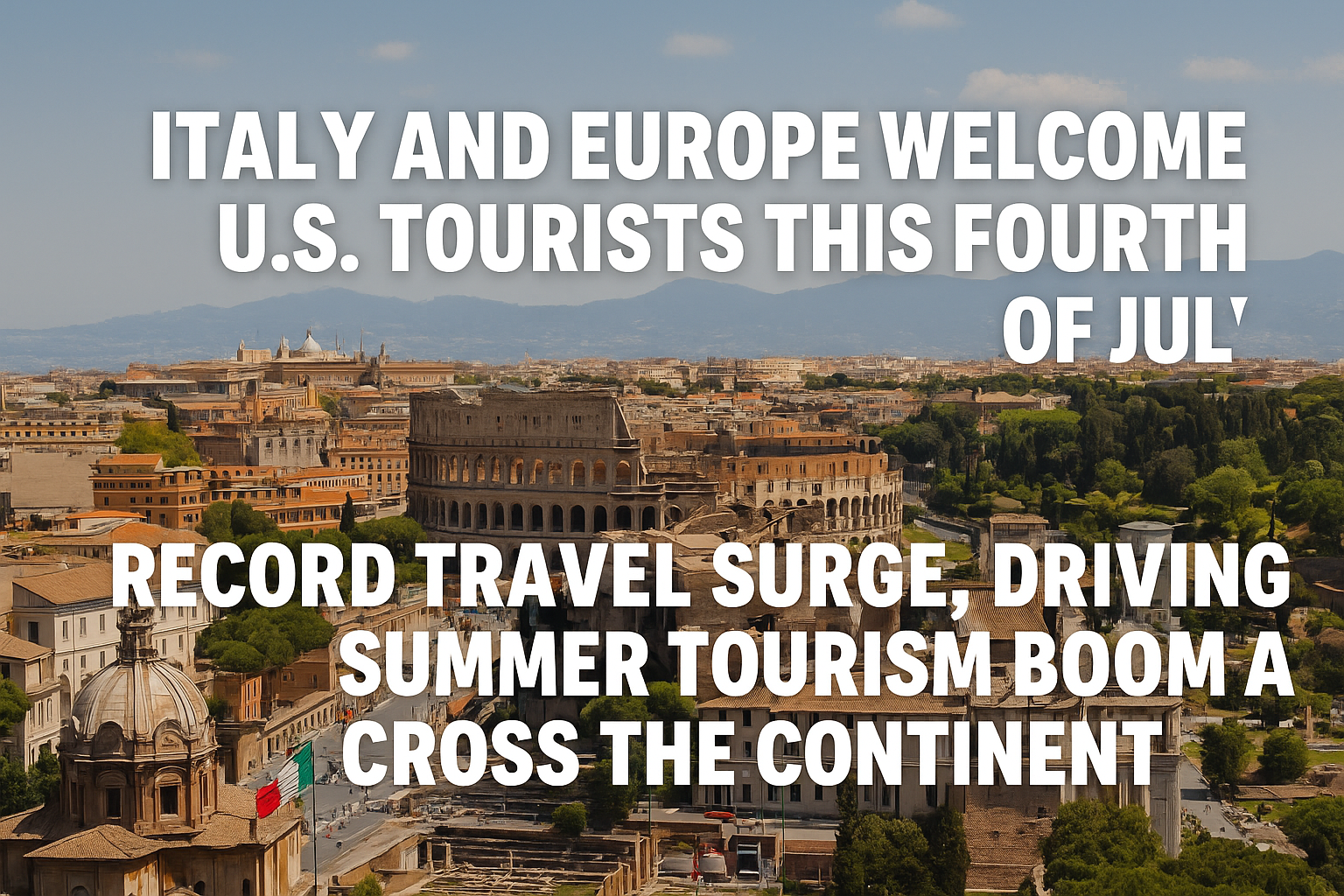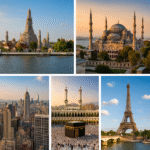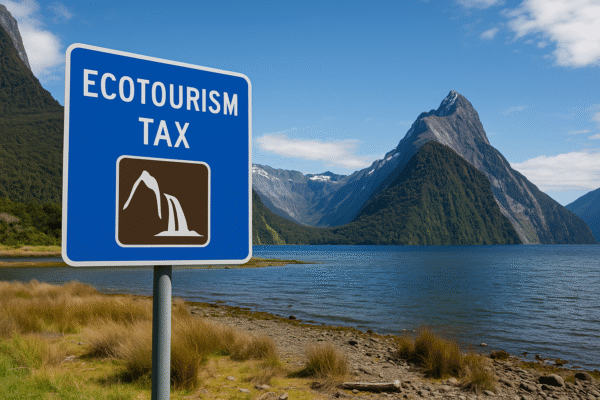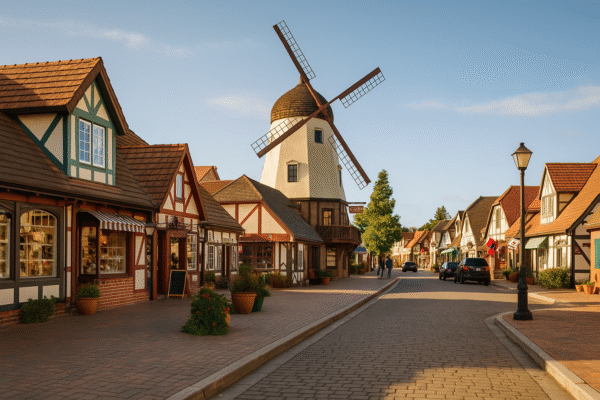This Fourth of July, U.S. travelers aren’t just flocking to fireworks at home—they’re filling flights to Europe in record numbers. Leading the charge is Italy, joined by France, England, Spain, Ireland, and the Netherlands, as the continent braces for its biggest Independence Day-related tourism spike in modern history.
With flexible work schedules, favorable euro-dollar exchange rates, and an appetite for immersive cultural experiences, Americans are turning July 4th into a launchpad for transatlantic adventures. And Europe, particularly Italy, is ready—with tailored packages, expanded flights, and celebrations curated for American travelers.
Italy Takes the Lead in Transatlantic Travel Surge
From the cobbled alleys of Rome to the glimmering Amalfi Coast, Italy is seeing an influx of U.S. tourists this July. The country’s tourism ministry reports bookings for the first week of July are up 18% year-over-year, with American travelers driving the majority of that growth.
Cities like Florence, Venice, and Naples are hitting peak occupancy, with Tuscany and Lake Como witnessing a boom in luxury villa rentals and wine tourism. Tour operators are adding last-minute day tours, cooking classes, and multi-city itineraries to accommodate surging demand.
In Rome, hotel occupancy is nearing 95%, prompting several properties to offer Fourth of July-themed rooftop eventscomplete with live jazz and Italian-American fusion cuisine.
American Tourists Power a European Travel Revival
Italy isn’t alone. Across Europe, major capitals and countryside retreats are experiencing a spike in American arrivals:
- Paris is nearing full hotel capacity near the Eiffel Tower and Champs-Élysées.
- London is drawing visitors to Wimbledon, museums, and pub-lined streets.
- Dublin is welcoming younger travelers seeking pub culture and literary tours.
- Barcelona and Madrid are buzzing with families and foodies alike.
- Amsterdam is hosting themed canal tours and museum nights geared toward U.S. tourists.
This isn’t just a seasonal bump—it’s a strategic success story. European tourism boards have been working behind the scenes for months, targeting the U.S. market with flight deals, influencer campaigns, and Independence Day promotions that emphasize safety, accessibility, and authentic experience.
Airlines and Hotels Adapt to Soaring Demand
To meet this surge, airlines like Delta, ITA Airways, KLM, and British Airways have expanded summer frequencies, adding direct service from Austin, Raleigh, Denver, and Seattle to key European cities.
Seat capacity on U.S.–Europe routes has risen by over 15% since last July, according to OAG. Many flights are now operating at full or near-full capacity.
Meanwhile, luxury and boutique hotels across Europe are unveiling packages built around the American holiday, featuring:
- Firework-view rooftop dinners
- Welcome gifts with U.S. flags and Italian wines
- VIP concierge experiences for longer stays
- Curated local excursions to historic and culinary landmarks
A Shift in Travel Behavior: More Time, More Immersion
This year’s American travelers are doing more than sightseeing—they’re settling in. The new wave of “slow travel” sees U.S. guests staying longer, exploring deeper, and spending more.
In Italy alone, average stays for U.S. visitors now exceed 9 nights, up from 6.5 nights pre-pandemic. Many are integrating remote work, opting for agritourismo retreats in Umbria, boutique hotels in Puglia, and wine resorts in Piedmont.
Cultural immersion is driving spend. U.S. visitors are booking:
- Pasta-making and truffle-hunting classes in Tuscany
- Private gondola rides in Venice with opera serenades
- Exclusive vineyard tours and Michelin-starred dining in Piemonte
- Multi-city rail passes to explore Florence, Milan, and Rome in one itinerary
Rising Tourism Revenue: Europe Sees Dollar Gains
This Fourth of July surge is more than symbolic—it’s economic gold. U.S. travelers are now spending 30% more per trip than they did in 2019, according to Mastercard’s Tourism Insights.
In Italy, that equates to millions in restaurant revenue, museum ticket sales, guide bookings, and local transportation. Paris and Amsterdam report similar trends, particularly in high-end and family-focused spending.
Italy Responds with Smart Infrastructure and Tax Strategy
With growth comes responsibility. Italy, already tackling overtourism in cities like Venice and Florence, is enhancing infrastructure to manage the holiday influx:
- Venice has expanded its tourism tax pilot, applying a day-tripper fee to reduce congestion and protect heritage sites.
- Rome has increased high-speed rail frequency and rolled out mobile ticketing for attractions like the Colosseum.
- Florence is using digital crowd control systems around the Uffizi Gallery and Duomo.
At the same time, Italy is investing tourism tax revenue into sustainability projects, heritage restoration, and public services—ensuring that this surge doesn’t come at the cost of local communities.
Final Word: A July 4th Celebration Without Borders
This Fourth of July, the American flag isn’t just waving over Washington—it’s flying high on hotel balconies in Rome, lining streets in Parisian festivals, and fluttering beside Dutch tulips.
Italy and its European neighbors have not only welcomed this moment—they’ve engineered it. Through smart strategy, cultural tailoring, and infrastructure upgrades, they’ve transformed a traditionally domestic U.S. holiday into a powerful moment of international travel and cultural connection.
As more Americans opt to celebrate their independence with global curiosity, Europe’s role as the world’s most desired destination has never been clearer.
And for Italy, it’s more than just a successful season—it’s a renaissance in the making.
For more travel news like this, keep reading Global Travel Wire





